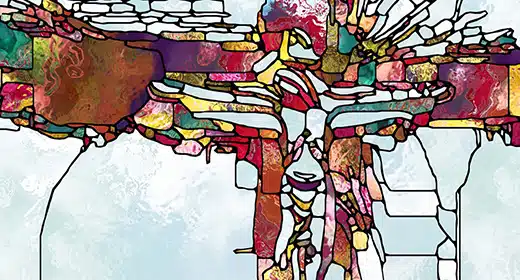By Rabbi Rami Shapiro: What is imagination?
Why not be content with reality?
You may be mistaking imagination for imaginary. Imaginary points to something that doesn’t exist; imagination points to our capacity to envision what might be brought into existence.
So imagination is a creative act?
Life is intrinsically creative, and living it well means that we, too, must be creative. Creativity as a spiritual quality allows you to remain open to the new. Creativity is a response to life that is as fresh as life itself.
What about imagination in a different sense, such as the capacity to imagine new futures and new ways of being and understanding?
Absolutely. Imagination in this sense is a kind of spiritual play, and play is one of the 16 attributes we are working with. Imaginative play can be done with paint and pastels, with wood, bronze, steel and fabric, with video and still images, with digital technologies of all sorts, and with language and storytelling. One way to use imagination is when reading sacred texts. Imagine all the different meanings a text has to offer, play with the words and the plot to see how many facets of truth a single text can reveal.
But isn’t this heresy? For some people the Bible is the literal word of God. How can you use your imagination and still maintain true to that idea?
Saying the Bible is the literal Word of God is not the same as saying you have to take the Word of God literally. Robert Burns literally wrote, “My love is like a red, red rose,” but he didn’t mean for us to take this literally. It is a metaphor to be imaginatively unpacked. What does it mean that his love is a rose, is red? Does love in someway have thorns? What are they and why are they? Asking and answering questions like this of the Bible or other holy text is playing imaginatively with the text without ever questioning its literal value.
How can I cultivate imagination in a spiritual context?
I would do two things:
- Reread favorite passages of Scripture and learn to engage the text imaginatively by inviting as many meanings to arise from it as you can.
- Make a dream journal and begin recording your dreams. Write, draw, illustrate with photos from magazines or of your own making, and create dynamic collage interpretations of your dreams. Allow yourself to imagine meanings of your dream texts as you did for sacred text. Slowly your dream journal will become a window into your imagination and kindle your imaginative faculty even more.








































